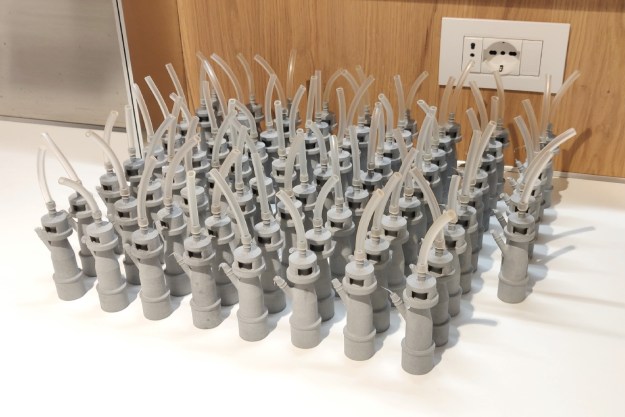In case you haven’t heard, robotic lawn mowers are totally a thing now. Believe it or not, they’ve actually been around for the better half of the last decade, but even so, odds are you’ve probably never seen one roving around your neighbor’s front lawn. Despite the fact that robo-mowers have been on the market for a few years, they haven’t really gained widespread popularity — arguably because they’re still fairly expensive. Even the most affordable robotic lawnmowers will put you back about 900 bucks, and the high end ones typically go for triple that amount.
But now, thanks to the work of German engineer Andreas Haeuser, there’s a cheap new alternative. The Ardumower, as he calls it, is a DIY robotic mower that you can print and assemble yourself for about $250-$300. That might sound complicated at first, but Haeuser actually designed this contraption from the ground up to be simple to construct — even for people without any DIY electronics experience. As long as you’ve got some basic hand tools and a 3D printer with a build volume of around 7 inches, you can totally build an Ardumower.
“In addition to a 3D printer and the needed filament (ABS and PLA) for printing the parts, only a few tools and resources are needed to build the chassis.” Haeuser explains. “These are mainly common hobbyist tools. You do not need a lathe or a milling machine. Every common 3d printer with a build volume of minimum 180mm x 180mm x 60mm (x,y,z) is suitable.”
The electronics that power the mower are about as simple as it gets. The bot is driven by two 12V geared motors, whereas the cutting device is made from a 12V DC-motor and a cutter disc with a diameter of 220mm. The power comes from a rechargeable 12V lithium polymer battery, and everything is controlled by an Arduino Uno and Arduino motorboard running open-source software.
Once you’ve got it all together, Ardumower functions almost exactly like a Roomba for your lawn — but there’s also a small caveat. Because your lawn doesn’t have walls, you have to set a “boundary wire fence” around your property to help Ardumower know where to mow. This takes a bit of extra time and effort, but you only have to do it once.
If you’re keen to build this crazy contraption, head over to Haeuser’s website to find all the 3D-printable files, bill of materials, and detailed build instructions. The info will put you back about 12 bucks, but that’s a small price to pay for never having to mow your lawn manually ever again!
Editors' Recommendations
- 3DMakerpro’s Seal is a pocket-sized scanner to make next-gen precision 3D prints
- Need a last-minute Halloween costume? Check out these 3D-printable getups
- The future of making stuff: Inside the evolution of 3D printing with Formlabs
- Father’s Day Gift Idea: These cheap 3D printers are on sale for less than $300
- 3D printing lets hospitals make ventilator substitutes with common equipment




